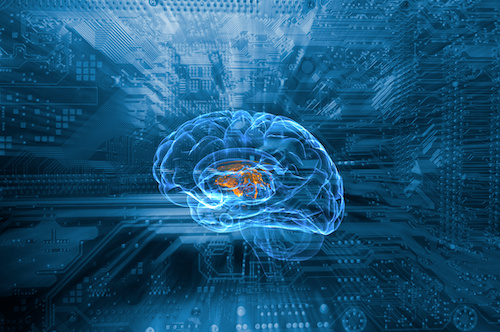Key factors:
The combination of AI in training brings each advantages and dangers. Whereas AI enhances engagement, personalizes studying, and gives useful insights, issues come up relating to knowledge privateness, moral issues, and the potential influence on human interplay within the academic course of. Putting a stability is essential for its efficient implementation.
What are the advantages of synthetic intelligence within the training sector?
As we study the advantages of synthetic intelligence in training, we should acknowledge that AI brings multifaceted advantages to the training sector past personalised studying, automation, or tutoring. AI facilitates environment friendly administrative duties, decreasing the burden on educators by dealing with routine processes corresponding to scheduling, grading, and useful resource administration. It allows the event of clever content material creation instruments, revolutionizing how academic supplies are generated, curated, and tailored to numerous instructing methodologies.
Furthermore, AI’s knowledge analytics capabilities present educators and directors with useful insights into total institutional efficiency, enabling evidence-based decision-making. AI-powered instruments can assist in figuring out gaps in curriculum design, serving to establishments refine their instructing methods. Moreover, AI contributes to the evolution of evaluation strategies, providing new methods to measure college students’ understanding and abilities past conventional testing.
Moreover, AI can foster collaborative studying environments by facilitating communication and resource-sharing amongst college students and educators. The combination of AI in academic video games and simulations enhances experiential studying, making complicated topics extra accessible and interesting.
Embracing AI’s potential in these numerous purposes holds the promise of optimizing academic processes, enhancing institutional effectivity, and making ready college students for the evolving calls for of the trendy world.
What are the 5 benefits and 5 disadvantages of synthetic intelligence?
Benefits of synthetic intelligence in training:
- Customized studying paths: AI allows the creation of personalised studying experiences, adapting content material and pacing to particular person pupil wants, enhancing understanding, and addressing numerous studying types.
- Environment friendly administrative duties: AI automates administrative duties, together with grading, scheduling, and knowledge administration, permitting educators to allocate extra time to instructing and pupil interplay.
- Knowledge-driven insights: AI analytics present educators with useful insights into pupil efficiency and studying patterns, serving to to determine areas for enchancment and tailor tutorial methods accordingly.
- Progressive instructing instruments: AI-powered academic instruments, corresponding to digital actuality and simulations, create immersive and interesting studying experiences, making complicated topics extra accessible and enhancing comprehension.
- International accessibility: AI facilitates distant studying, breaking down geographical limitations and offering academic alternatives to college students worldwide, fostering inclusivity and entry to high quality training.
Disadvantages of synthetic intelligence in training:
- Privateness issues: The gathering and evaluation of pupil knowledge by AI techniques elevate privateness issues, necessitating strict measures to safeguard delicate info.
- Dependence on know-how: Overreliance on AI might diminish vital considering and problem-solving abilities in college students, as they turn out to be accustomed to technology-driven options.
- Price of implementation: Introducing AI in training could be costly, limiting entry to superior applied sciences for faculties with restricted assets.
- Potential for bias: AI algorithms might inadvertently perpetuate biases current in coaching knowledge, resulting in unequal academic alternatives and outcomes for various teams of scholars.
- Instructor and pupil resistance: Resistance or discomfort with know-how, each amongst academics and college students, can hinder the efficient implementation of AI within the academic setting. Educators want correct coaching to combine AI instruments efficiently.
Does AI profit or harm the sphere of training?
The influence of AI on training, and the benefits and drawbacks of synthetic intelligence in training, are nuanced, presenting each advantages and challenges. AI advantages training by providing personalised studying experiences, automating administrative duties, and offering useful insights by knowledge analytics. It enhances effectivity, world accessibility, and the event of modern instructing instruments. Nevertheless, challenges embody issues about knowledge privateness, potential biases in AI algorithms, and the danger of job displacement for educators. The standard of training will depend on accountable AI implementation, addressing moral issues, and guaranteeing equitable entry.
In the end, AI has the potential to considerably profit training by optimizing processes, enhancing studying outcomes, and making ready college students for the calls for of a quickly evolving world. Nevertheless, its success hinges on a cautious stability between harnessing technological developments and preserving the important human components within the academic expertise.
How can AI disrupt training?
Trying to the way forward for AI in training, AI can disrupt training by revolutionizing conventional instructing strategies. It introduces personalised studying experiences, adapts to particular person pupil wants, and automates administrative duties, reshaping the roles of educators. AI-driven analytics present unprecedented insights into pupil efficiency, permitting for data-driven decision-making. Digital actuality and simulations improve experiential studying, difficult typical classroom buildings. Nevertheless, AI’s potential to exchange sure duties might result in job displacement for educators, elevating issues. Moral issues, knowledge privateness points, and the necessity for equitable entry additionally emerge as potential disruptions. Putting a stability between AI integration and sustaining human-centric academic values is important.
Conclusion
The combination of AI in training presents profound advantages, corresponding to personalised studying and improved effectivity. Nevertheless, it introduces dangers like knowledge privateness issues and potential biases. Balancing technological innovation with moral issues is essential to harness the total potential of AI for the betterment of training.

